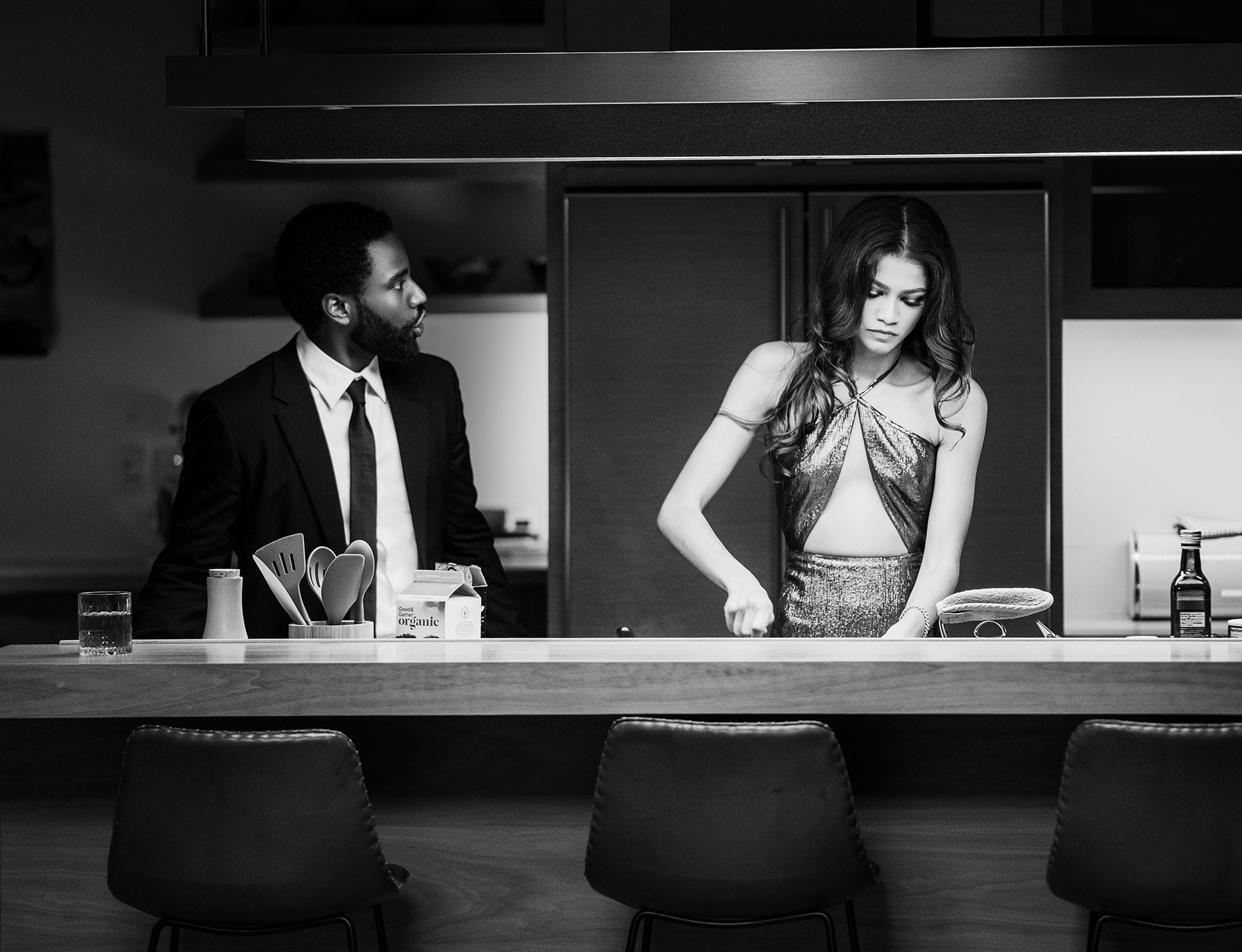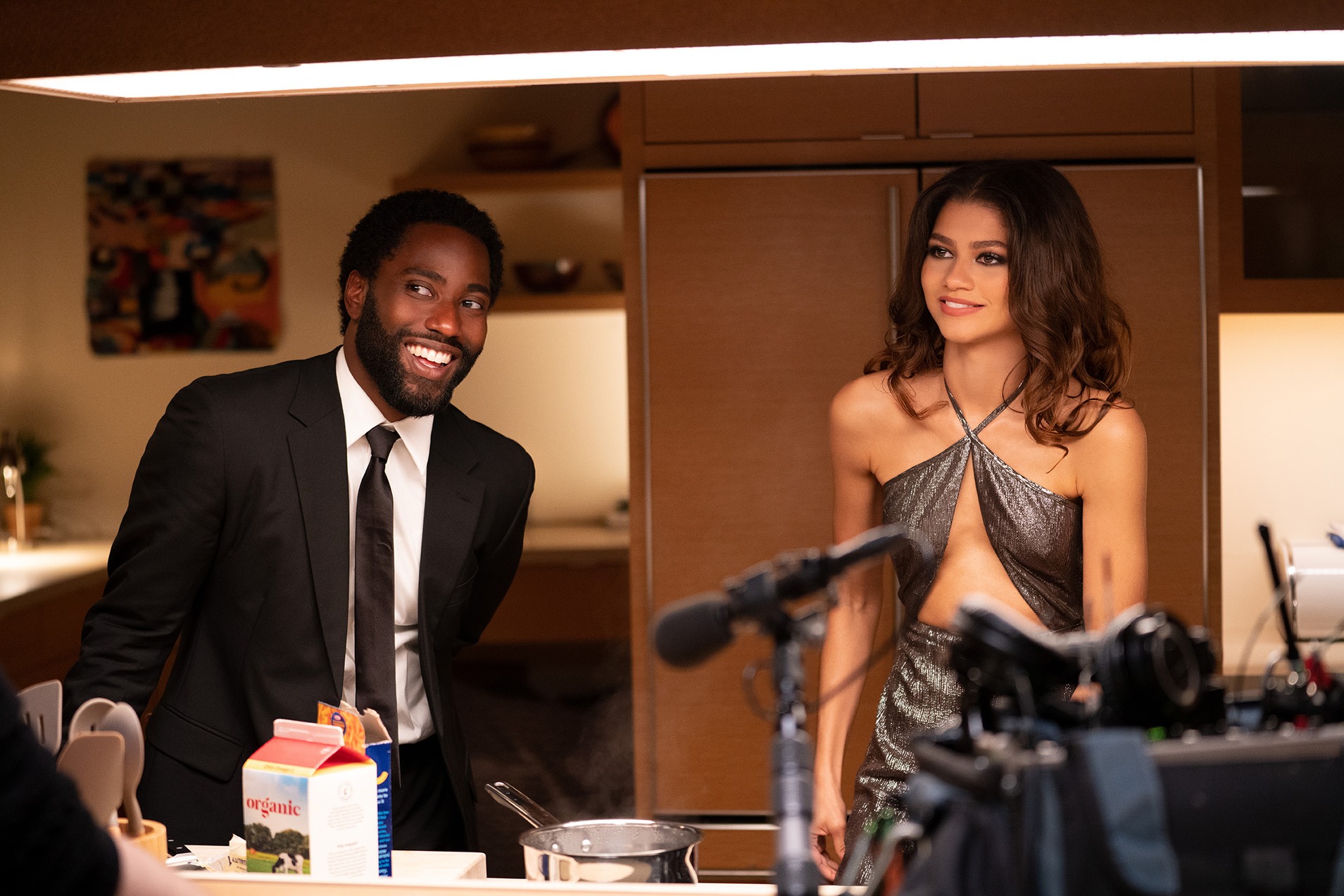All Videos
Clubhouse Conversations — Malcolm & Marie
Interviewer Rodney Taylor, ASC talks to cinematographer Marcell Rév, HCA about his visual approach to this intimate two-person drama, written and directed by Sam Levinson and shot on black-and-white film.
Malcolm & Marie charts the relationship extremes between an up-and-coming film director and his muse (played by John David Washington and Zendaya, seen below). The story unfolds over the course of a single night as the two embattled lovers spar in a single location, Malcom riding high after his latest film premiere; Marie concealing resentment.

The feature wears its cinematic influences on its sleeve, with visual references including Who’s Afraid of Virginia Woolf? (photographed by Haskell Wexler, ASC) and The Servant (Douglas Slocombe, ASC BSC), among others.
Seeking a cinematic quality for the story, Rév opted to shoot with 3-perf Kodak Double-X 5222 250D/200T, with Arricam LT bodies and Zeiss Super Speed lenses.

Their location was Feldman Architecture’s “Caterpillar House” in Carmel, Calif. — a sprawling modern ranch-style dwelling. As a touchstone for photographing the house, Rév referenced the structurally-conscious camerawork by Gianni Di Venanzo, AIC in La Notte, with the rectilinear angles and frame edges of their 1.85:1 aspect ratio boxing in the emotional combatants, especially when shooting from the outside. The home’s numerous floor-to-ceiling windows also offered a 270-degree view of the surrounding terrain.
The film stock was processed by Fotokem, and Rév performed the final grade at Company Three with senior colorist Tom Poole.

Born Budapest, Hungary, Marcell Rév (above at the camera, with the production shooting under Covid conditions) studied cinematography at the Academy of Drama and Film in Budapest as well as a master class led by Vilmos Zsigmond, ASC, HSC. He photographed a number of Hungarian features — including Land of Storms, White God, Most of the Souls That Live Here and Jupiter’s Moon — before shooting the American action comedy Assassination Nation and HBO biographical drama Paterno. He photographed the first four episodes of the HBO series Euphoria (also working with writer-director Sam Levinson), for which he won Best TV Pilot at Camerimage. (His work was the subject of a previous Clubhouse Conversation episode). He recently completed shooting the feature The Story of My Wife.
Rodney Taylor grew up in North Carolina with a love for movies. In college, during a television-production class, he looked into a viewfinder for the first time and knew he had to shoot. After gaining experience photographing live sports, he made the transition to film when asked to shoot a documentary. In 1988, he moved to Los Angeles and began working his way up through the ranks, learning from such mentors as Mehran Salamati and Rogier Stoffers, NSC. A contact from the Maine Photographic Workshops, Levie Isaacks, ASC invited Taylor to Roger Corman’s production company, where he was hired as a camera assistant.
Learning to use the large-format Imax system, Taylor served as an AC on such documentary projects as Ring of Fire, Africa: The Serengeti and Search for the Great Sharks before transitioning to director of photography on Alaska: Spirit of the Wild, Wildfire: Feel the Heat and Michael Jordan to the Max.
Moving into narrative production, he photographed such features as Swimmers, Save Me, That Evening Sun and Supremacy, and later shot TV series including Married, Getting On, Shots Fired, Ballers (earning an Emmy nomination for his work) and Swagger.

You’ll find more episodes in this series here.
Learn more about our new season here.

